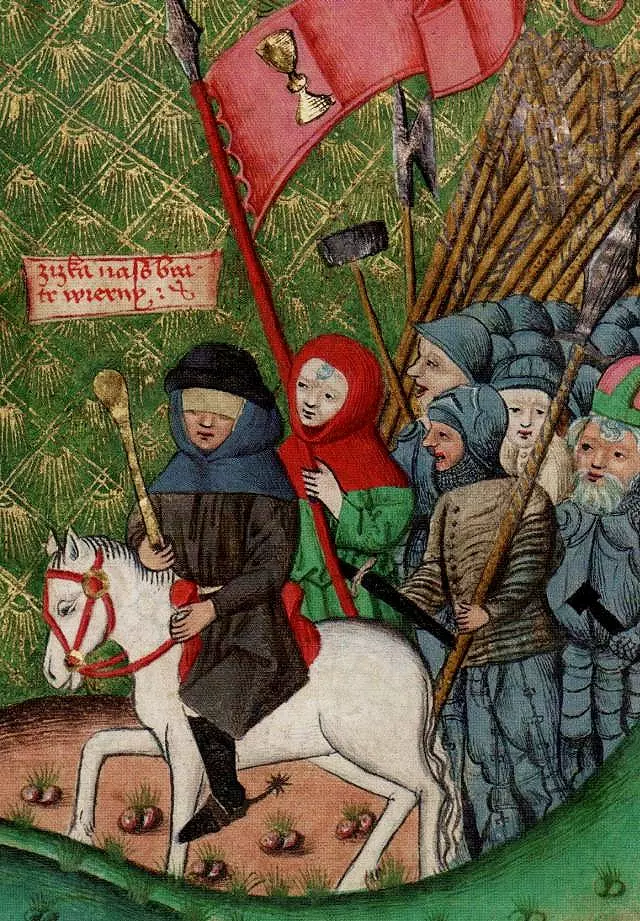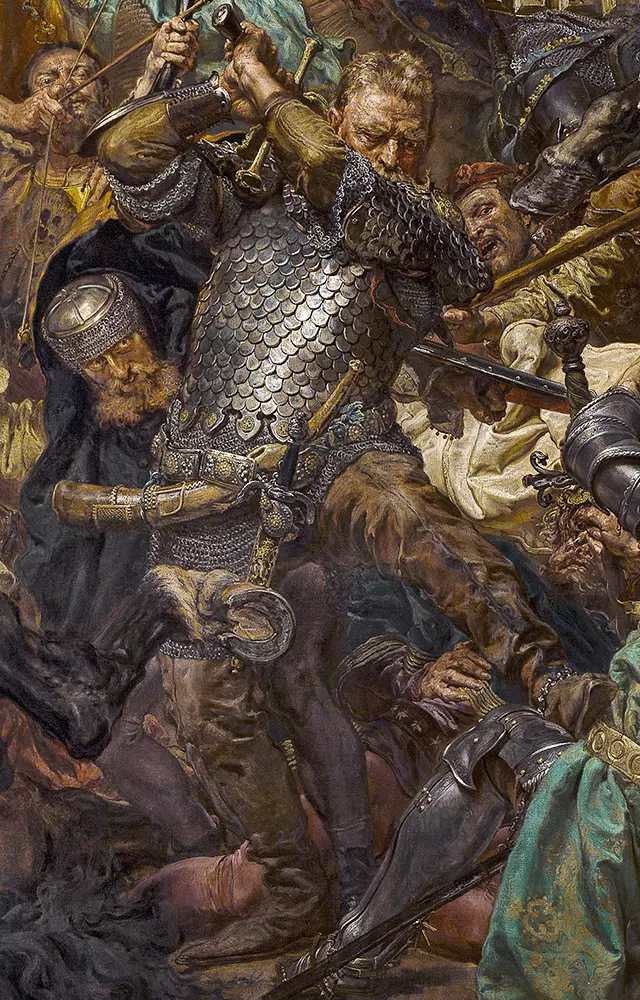The story of Protestantism as a movement starts with a man named Jan Hus, a Czech scholar and priest. Hus tried to reform the church, and by doing so, he was sentenced to death by burning at the stake. In 1415, his execution took place on the Rhine riverbanks, where he was burned to death. What the Catholic Church officials saw as a simple removal of a rebel priest started a schism that shaped Europe for the following centuries.

Hussites: The calm before the storm
The tragic execution of Jan Hus could not go unanswered in Bohemia. The followers of Hus, calling themselves Hussites, slowly but steadily organized and spread the word of the injustice. King Wenceslas IV of Bohemia, following his brother Sigismund of Hungary and the Pope’s advice, started to arrest Hussite leaders and supporters to suppress the movement. The Hussites officially proclaimed heretics were ordered to disband their movement and cease all activity. They did the exact opposite.
The bugle call of the Holy War was sounded on Sunday, 30 July 1419, when Prague’s counselors (the King’s representatives) and the mayor were thrown from the town hall’s windows by an enraged Hussite crowd during the Prague Defenestration. The crowd, led by radical preacher Jan Želivský and Hussite army General Jan Žižka, stormed the town hall to free their imprisoned brothers. The first Prague defenestration signaled the start of civil disobedience, which led to revolution.
From revolution to war: Cross vs. Chalice
The main objective from the beginning was to control Prague, the capital. What started as minor armed street clashes with Catholic forces slowly became an all-out war in the country. To distinguish themselves, Hussites chose the chalice as their symbol. This decision goes back to Jan Hus, who argued that all people should receive the proper Eucharist: both body and blood of Christ, which was against the Catholic church’s teaching (only the priest were allowed to receive the blood of Christ in the Catholic church).


Not only fighting the domestic Catholic armies, but the Hussites also defended their beliefs against the attacks of the crusader armies from all over Europe. Not long after the Hussites took control over Prague, Sigismund of Hungary, heir to the Czech throne after Wenceslas IV’s death, marched his army into Bohemia with the support of crusaders sent by the Pope.
The two armies met at Vitkov Hill overlooking Prague. Hussite general Jan Žižka devised a brilliant strategy against numerous enemies. He rounded up armored carriages manned by soldiers and formed a fortress out of them. This mobile fortress, called a “wagon wall,” became a signature tactic of the Hussites. A medieval tank, you could say. With this tactic and Žižka’s superior military skill, Hussites (only a few hundred strong) repelled over seven thousand crusaders.
The Warriors of God
Hussites repelled this crusade and the next three, four in total. They were helped not only by their military skills but also by their passion for defending their faith. God’s warriors, as they called themselves, put fear into their enemies. One battle is particularly fascinating: the Battle of Domažlice. During this battle in 1431, the Hussites won against the Crusaders despite being outnumbered by 100,000 to 40,000.
They won by singing their famous choral “Ye Who Are Warriors of God.” While singing the choral, the Hussite forces unexpectedly stormed the crusader lines. The crusaders, surprised by such a move and confused by the loud singing, thought they were outnumbered by the Hussites and decided to retreat.
The Hussite legacy today
Despite being a violent part of Czech history, the Hussite Wars are still remembered and frequently discussed. Many Czech see this period as a time when Czechia was independent, self-sufficient, and respected throughout Europe.
To support this claim, we can use Prague as an example. There is a giant statue of Jan Hus in Old Town Square to commemorate his bravery. There is an enormous equestrian statue of Jan Žižka overlooking Prague on Vitkov Hill, where we waged his famous battle. The statue is located in the Zizkov district of Prague. Most streets in Žižkov have Hussite-related names: Hussite Street, Chalice Street, Wagon Street, Jan Želivský Street, etc. Speaking of Jan Želivský, the man who led the attack on Prague City Hall, there is a metro station named after him.
All in all, the legacy of the Hussites is an inseparable part of Czech history and identity.







